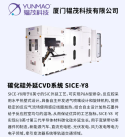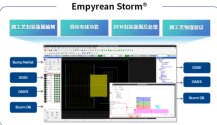Competition is Good

There is a FEL project in Dalian
SSMB in Beijing
Looks like the FEL project is ahead with this recent breakthrough.
12 hours ago — Chinese scientists stably operated an electron beam at a repetition rate of one megahertz for the first time on July 24 in
Dalian, ...
Dalian Coherent Light Source
“Comprehensive experimental research equipment base on tunable EUV coherent light source (Dalian Coherent Light Source, DCLS)” is supported by National Natural Science Foundation of China and developed jointly by Dalian Institute of Chemical Physics and Shanghai Institute of Applied Physics, CAS. the project is in the charge of Academician Xueming Yang.
DCLS is the first Free Electron Laser (FEL) user facility in China, and also the only FEL facility operating exclusively in the EUV wavelength region all over the world. Free electron laser, which is called the Fourth-generation Advanced Light Source, has become more and more important in the scientific research. It is a kind of large-scale scientific facility that hold great promise for the generation of coherent short-wavelength radiation with ultra-high brightness and ultra-short pulse duration, could dramatically improve the temporal and spatial resolution of the scientific research. With the outstanding properties, scientists could probe the microscopic world at the atomic and molecular level and on a femtosecond time scale, such as the electronic dynamic motion, molecular structure and evolution, and material phase transition. The extreme ultraviolet (EUV) wavelength region is an ideal light source for excitation of valence electrons and ionization of molecular systems with high efficiency. Such EUV light source will be a great tool for studies of important dynamic progresses in the areas of energy, chemistry, physics, material, etc.
During the past several years, the joint project team has completed a lot of important technique breakthroughs and successfully built the light source facility. It had emitted the first EUV light beam based on the sincerely cooperation between the two research teams. The gain curve and spectrum of self-amplified spontaneous emission (SASE) and high gain harmonic generation (HGHG) FEL were both measured, and tapering undulator helps increase the power by almost 100% when the FEL output saturated. It is able to deliver optical beam from 50-150nm in picoseconds or 100 femtoseconds for such research. Single pulse could contain more than 1014 photons.
In the future, DCLS could be expected to be the edge tool to promote the development of science and technology in China. In addition, 90% of the instruments and equipments in the light source are independently developed, which represents that China has reached the international advanced level in this field, and has the ability to lead the global FEL’s development.





